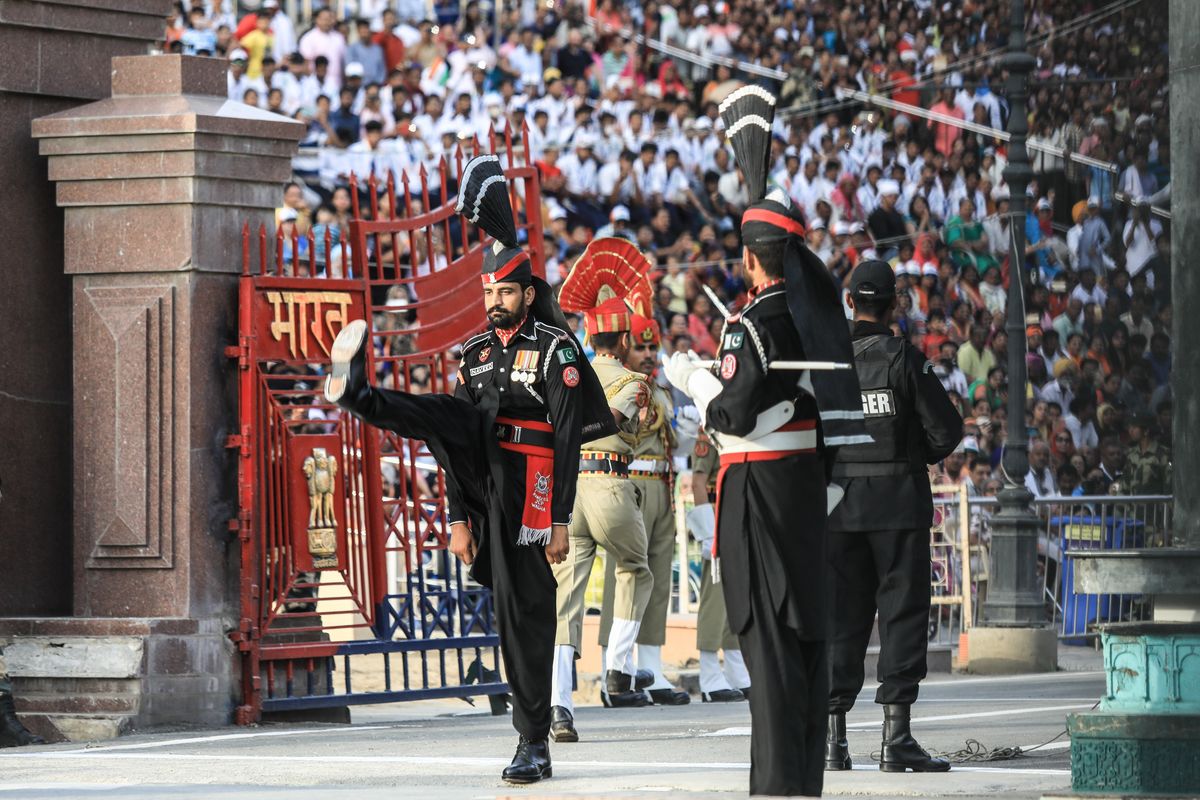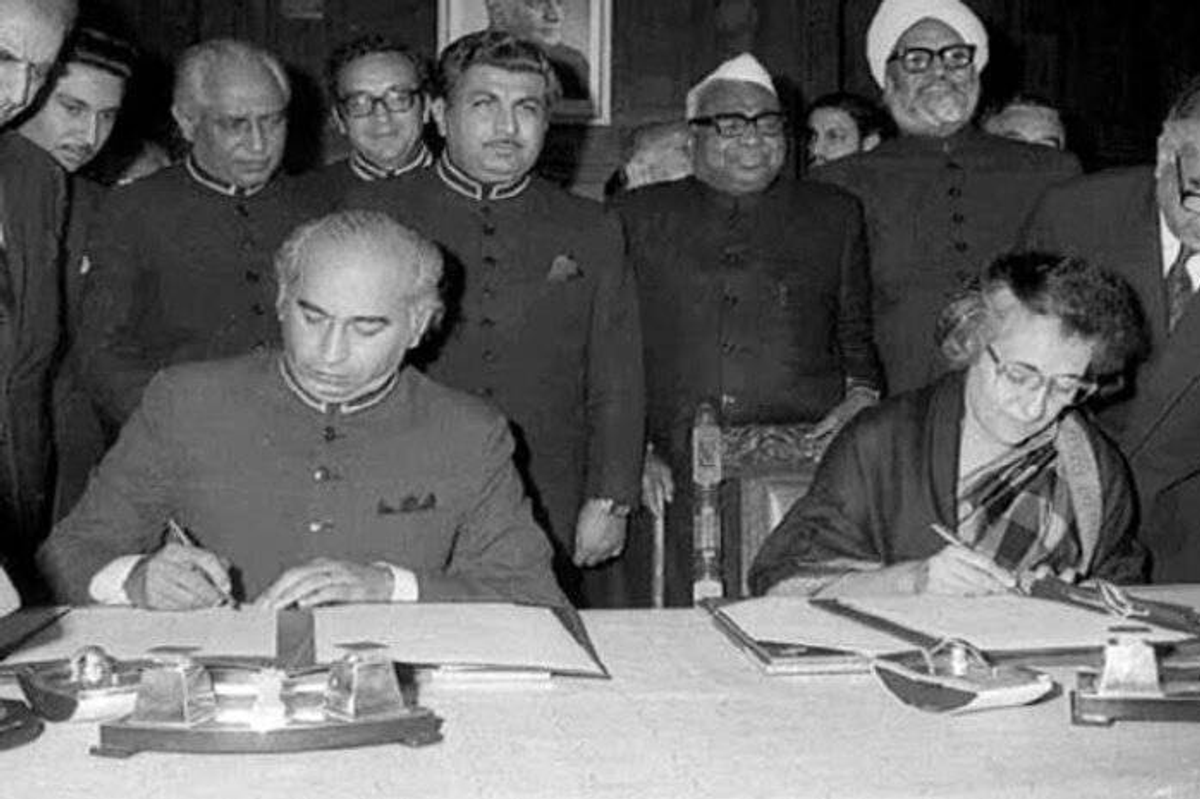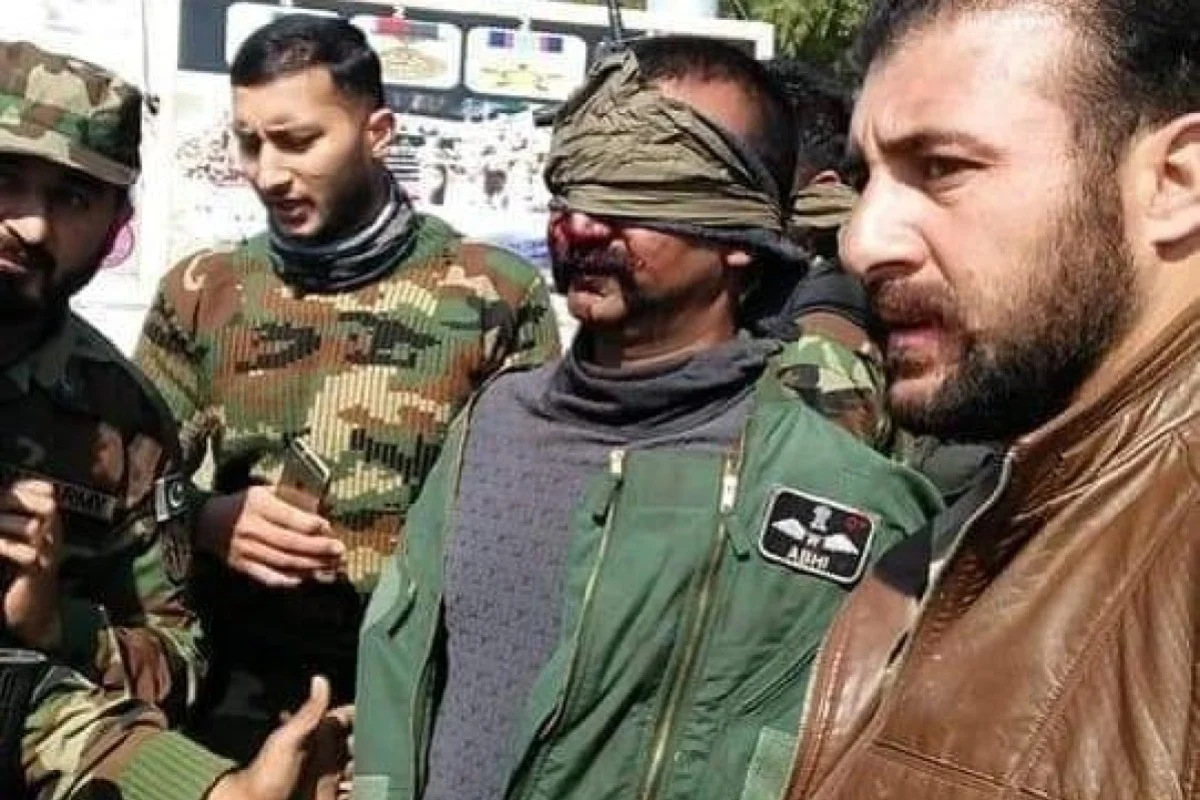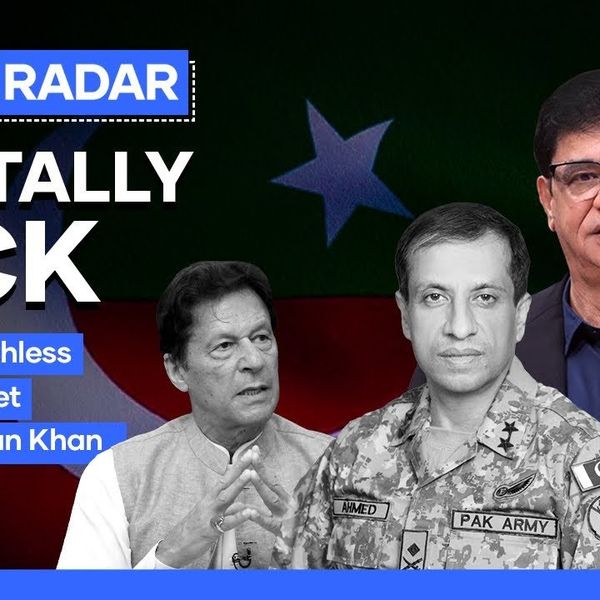From Partition to Pahalgam: A timeline of tensions in India-Pakistan relations
After the Pahalgam attack, India-Pakistan ties have hit a new low in a history marked by decades of conflict and mistrust
Saad Khan
Senior Producer
Saad Khan is an award-winning author and filmmaker with over five years in mainstream journalism. Winner of the Literarti award in 2018, Saad's work has been published internationally and his area of expertise covers a broad range of subjects. He was also named among top twenty emerging writers from South Asia in 2019 by Outcast Magazine.

Pakistani and Indian soldiers parade during a daily ceremony at the Wagha border near Lahore.
Shutterstock
Since Partition, India and Pakistan have shared a relationship defined more by animosity than amity.
Over the decades, a succession of wars, militant attacks, and political standoffs have derailed every attempt at peace.
The Pahalgam attack in Indian-administered Kashmir has once again plunged bilateral relations into crisis.
Since the Partition of British India in 1947, India and Pakistan have shared a complex and often tense relationship. Rooted in a difficult history, their ties have frequently been shaped by conflict, mistrust, and competing national narratives, with diplomacy struggling to gain consistent footing.
Over the decades, a succession of wars, militant attacks, and political standoffs have derailed almost every attempt at durable peace. The latest flashpoint, the deadly Pahalgam attack in Indian-administered Kashmir, has once again plunged bilateral relations into crisis.
At least 26 people, including one Nepali national, were killed and at least 10 others injured after terrorists ambushed tourists.
A day later, India took the unprecedented step of suspending the decades-old Indus Waters Treaty, a pillar of transboundary cooperation brokered by the World Bank in 1960. In tandem, it ordered all Pakistani nationals to leave the country within 48 hours, citing national security concerns. These decisions came in the wake of a high-level Cabinet Committee on Security (CCS) meeting, chaired by Prime Minister Narendra Modi, who cut short a diplomatic visit to Saudi Arabia to return and lead the emergency deliberations.
But while the Pahalgam tragedy is one of the deadliest attacks in Kashmir, these incidents have been far from unprecedented. India-Pakistan ties have reached the brink multiple times in their shared post-colonial history.
1947–48: The genesis of discord
The seeds of enmity were sown with the first Indo-Pak war over Kashmir, immediately after independence. According to the University of Central Arkansas' Center for the Study of Global Conflict, tribal militias from Pakistan invaded the princely state of Jammu & Kashmir, prompting the Maharaja to accede to India.
The war ended with a UN-mediated ceasefire, resulting in a divided Kashmir and the establishment of the Line of Control (LoC).
1965: War returns to Kashmir
Nearly two decades after Partition, the fragile peace was shattered again. In 1965, Pakistan launched Operation Gibraltar in Indian-administered Kashmir. India blamed Pakistan for infiltrating militants and responded with full military force.
The second war ended with a ceasefire brokered by the Soviet Union in the Tashkent Agreement.
1971: A war that redrew maps
The most devastating blow to Pakistan-India relations came during the Bangladesh Liberation War in 1971. The Pakistani military's crackdown in East Pakistan led to millions of refugees fleeing to India, sparking a humanitarian and geopolitical crisis. India’s support for the Mukti Bahini, a separatist faction in East Pakistan, and its subsequent military intervention led to the surrender of Pakistani forces and the creation of Bangladesh.
The Simla Agreement in 1972 attempted to establish a framework for peace. Signed between Indian Prime Minister Indira Gandhi and Pakistani President Zulfikar Ali Bhutto on July 2, 1972, the agreement was a diplomatic response to the 1971 war. A key outcome was India’s decision to release over 90,000 Pakistani prisoners of war.

The agreement committed both countries to resolve all outstanding issues bilaterally and through peaceful means.
1999: Kargil conflict
The 1990s offered a glimmer of hope. Both countries conducted nuclear tests in 1998, entering a new era of deterrence. This was followed by the Lahore Declaration in early 1999, where leaders from both sides pledged peace and dialogue.

But the Kargil War, declared only months after the signing of the Lahore Declaration, redid all efforts towards peace. India blamed that Pakistani soldiers and militants crossed the LoC into Indian territory, occupying strategic heights in Kargil. Pakistan denied all allegations and blamed the fighting entirely on independent Kashmiri insurgents.
2001: Parliament Attacks
In December 2001, five terrorists attacked the Indian Parliament in New Delhi, which resulted in the deaths of eight security personnel and a gardener.
India blamed a Pakistan-based group for the attack. It responded with Operation Parakram, massing troops along the border in what became one of the longest military standoffs between the two countries. Pakistan rejected all allegations and demanded an impartial inquiry into the attack.
2008: Mumbai Attacks
In September 2008, 10 terrorists carried out a coordinated assault in Mumbai, killing 166 people and paralyzing India’s financial capital.
India blamed the attackers for having allegedly been trained and launched by Pakistan, allegations which Pakistan called baseless.

India suspended all formal dialogue in a move aimed at isolating Pakistan internationally. Confidence-building measures (CBMs) lost credibility, and relations plunged into a prolonged chill.
2016–2019: Strikes and deepening freeze
In 2016, an attack on an Indian army base in Uri led to an escalation across the LoC. India claimed it had carried out “surgical strikes” across the LoC targeting militant launchpads in Pakistan. However, it did not release any verifiable evidence to substantiate the operation. Pakistan rejected the claims, denying that any such incursion had taken place on its side of the LoC.
The situation worsened with the Pulwama suicide bombing in February 2019, which killed 40 Indian paramilitary personnel. India responded with an airstrike on Balakot, claiming to have hit a militant training camp, but refused to share proof of the strike.

Pakistan retaliated with an air raid of its own, leading to an aerial dogfight in which an Indian pilot was captured and later returned.
2019–Present: A prolonged cold war
Perhaps the longest and most stagnant period in bilateral ties began in August 2019, when the Indian government revoked Article 370, stripping Jammu & Kashmir of its special status. Pakistan condemned the move as a violation of UN resolutions and international law. In response, it expelled the Indian High Commissioner, suspended diplomatic and trade ties, and began aggressively internationalizing the Kashmir issue.
Since then, the two countries have remained in a deep diplomatic freeze. While ceasefire agreements were reaffirmed at the LoC in 2021, no major diplomatic breakthrough has occurred. Talks remain suspended, people-to-people contact is minimal, and both countries are entrenched in nationalist narratives that leave little room for engagement.
Risk to regional peace
Speaking to Nukta, political analyst Syed Mohammad Ali warned that India’s unilateral suspension of the Indus Waters Treaty could be interpreted by Pakistan as an act of war, posing serious risks to regional peace and stability.
“Such actions by India,” he noted, “may also be viewed as a threat by other countries with strategic interests in Pakistan.”
Meanwhile, strategic and geopolitical analyst Dr. Qamar Cheema, speaking to Nukta, downplayed the potential for regional powers to defuse the crisis, arguing that their influence remains limited in the current standoff between India and Pakistan.
“China, Iran, and Russia are undoubtedly key regional players,” he said, “but they still need to carve out a more effective role to assert meaningful influence in this evolving scenario.”









Comments
See what people are discussing